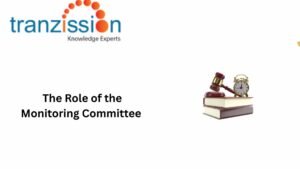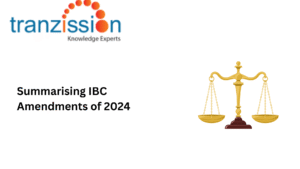
The principle of good faith in insolvency proceedings
Table of Contents
In the insolvency framework, good faith in insolvency is represented by the actions of the parties involved in the resolution process. For instance, under the Insolvency and Bankruptcy Code, 2016 (IBC) a creditor has to disclose all relevant information about their debt when filing a claim, an insolvency professional must act impartially, and a debtor must disclose their assets to the insolvency professional.
The Concept of Good Faith in Insolvency
Insolvency proceedings require that all stakeholders and insolvency professionals must act honestly and fairly, without attempting to take unfair advantage of others. To understand its importance in the resolution proceedings, first, we should understand what good faith means.
Read more : Balancing environmental claims during CIRP
Definition of ‘Good Faith’:
Good faith represents honesty, integrity, and fairness in dealings between creditors, debtors, and other stakeholders during insolvency proceedings. The concept of good faith is a fundamental legal principle that applies to various domains of law, not just insolvency. This term lacks a definition that is accepted in all situations, but it is often linked to intentions of fraud, misrepresentation, or malice.
Importance in Insolvency Processes:
In insolvency proceedings, all parties should be treated equally, where no one creditor will have preference over other creditors without any legal or financial reasons. The corporate debtor has to disclose all relevant information to creditors and insolvency professionals to facilitate a fair assessment of the situation. Therefore, ensuring that their actions are conducted with ‘good faith’ the trust in the judicial system and procedural efficiency increases.
Good Faith in Chapter 11 Bankruptcy
Chapter 11 bankruptcy implies good faith as a requirement of the debtor to file their petition with honest intentions, involving a legitimate plan to organise their business.
U.S. Perspective:
Chapter 11 of the U.S. Bankruptcy Code emphasises the requirement of good faith for plan proposals and debtor actions. However, the courts should only dismiss a Chapter 11 case as improperly filed upon a showing that the proceedings are objectively futile. Under the Casey Study, 2024, it was recommended that in the process under this Chapter, there must be an inclusion of critical aspects of good faith, avoiding manipulation of bankruptcy protections for ulterior motives and balancing debtor rights with creditor interests during reorganization.
Case Laws:
In re SGL Carbon Corp. addressed the issue of whether there is a “good faith” requirement for Chapter 11 petitions. The Court concluded that SGL Carbon’s Chapter 11 petition lacked a valid reorganisation purpose and lacked good faith making it subject to dismissal under 11 U.S.C. s. 1112(b). This case demonstrated the misuse of Chapter 11 to avoid unrelated liabilities, failing the good faith test. The role of the court was clarified in re Sylmar Plaza, L.P. The court plays an important role in evaluating subjective intentions and the objective feasibility of reorganisation plans.
Read more : Offences and Penalties under IBC, 2016
Global Perspectives on Good Faith in Insolvency
The KSVA Advisory Study is a research report published in 2023 by the Canadian advisory firm KSVA, and it focuses on the concept of “good faith” in the business and legal context, such as sincerity in business dealings. The term “good faith” is a tool to combat procedural abuses by stakeholders. To define this term, the firm includes a detailed breakdown of the legal and ethical components that constitute good faith. It essentially discusses the evolution of good faith under Canadian insolvency law. This Study provides real-life examples of situations where good faith was either upheld or breached, highlighting the potential consequences. The content includes judicial emphasis on transparency and fair dealing during creditor meetings and plan negotiations.
Challenges in Enforcing Good Faith
Due to the complexities of insolvency cases, procedural irregularities, and potential fraudulent actions by stakeholders, there are many challenges in enforcing good faith:
Ambiguity in Definition:
The IBC does not define “good faith”. Therefore there is room for parties to attach their interpretation of good faith, leading to inconsistent judicial interpretations.
Abuse of Process:
The lack of complete information about a company’s financial situation can make it difficult to accurately assess whether parties are acting in good faith. Thereby, stakeholders may exploit the ambiguity to allege bad faith and delay proceedings.
Balancing Interests:
Proving a stakeholder acted in bad faith can be difficult due to the ambiguity of ‘good faith’ and establishing malicious intent. For insolvency professionals, legal professionals, and Adjudicating Authorities, ensuring good faith without infringing on the legal rights of creditors or debtors remains a delicate task.
Practical Recommendations for Professionals
Insolvency professionals, registered valuers, advocates, independent auditors, or any other professional involved in the resolution professional, must maintain detailed documentation of all actions and communications to demonstrate transparency and proactively identify and address potential allegations of bad faith. As insolvency professionals are involved with this process from the first step, they must keep comprehensive and detailed documentation of all actions, such as reasons behind decisions, supporting evidence, and any relevant communication, to ensure transparency and accountability in their work. This is a crucial aspect of their professional code of conduct under the IBC.
Emerging Trends and Future Implications
IBC faces challenges in implementing the principle of good faith as there are difficulties in proving fraudulent transactions, lack of cooperation from debtors or creditors, and managing the interests of all stakeholders.
Integration of Ethics in Insolvency Law:
Insolvency laws in India list a professional code of conduct for insolvency practitioners regarding impartiality, confidentiality, and avoiding conflicts of interest. By actively identifying and addressing potential conflicts of interest among insolvency professionals and requiring disclosure of any potential conflicts, while implementing measures to mitigate them, courts are emphasising ethical considerations in good faith determinations.
Role of AI and Data Analytics:
Artificial intelligence (AI), data analytics, and other advanced tools may be used to detect patterns of bad faith or procedural abuse in complex insolvency cases. They can be used to analyse large volumes of financial data, identify potential fraudulent activities, and facilitate better decision-making. Such technology can help ensure a fair and transparent process for all stakeholders involved in insolvency proceedings.
Cross-Border Insolvency:
Sections 234 and 235 of the IBC cover cross-border insolvency matters in India. However, there is no mention of how such cases are to be handled. But, good faith is gaining prominence in cross-border insolvency proceedings under frameworks like the UNCITRAL Model Law.
Conclusion
Good faith serves as the cornerstone of fairness and efficiency in insolvency proceedings. Its role extends beyond legal compliance, fostering a culture of ethical conduct among stakeholders. In the IBC, “good faith” essentially means that all parties involved in the insolvency process are required to act honestly, fairly, and transparently, thereby avoiding deceptive or manipulative practices. Adhering to the principles of good faith during the resolution process is crucial to ensure that it is just and efficient.




